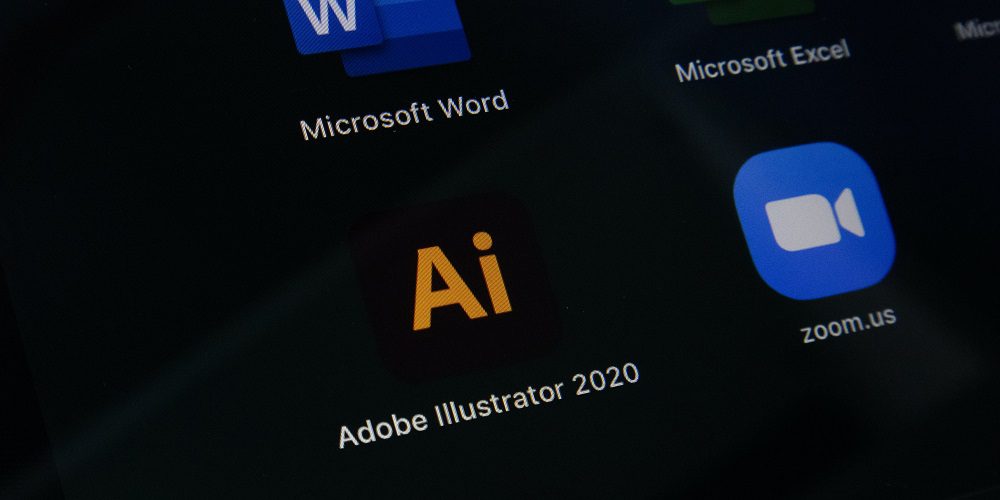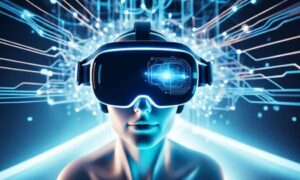Welcome to the fascinating world of technology! In this fast-paced era, we often find ourselves surrounded by a multitude of gadgets and computer systems. But have you ever wondered what makes these devices tick? What lies beneath their sleek exteriors? Today, we are delving into the fundamentals of hardware and software technologies. These two pillars form the backbone of every technological marvel we encounter. So, let’s embark on an enlightening journey together as we unravel the mysteries behind these essential components and explore how they collaborate to shape our digital landscape.
Introduction to Hardware and Software Technologies
In today’s digital age, it is almost impossible to imagine a world without technology. We rely on it for communication, entertainment, education, and so much more. But have you ever stopped to think about the different components that make up this vast technological landscape? At its core, technology can be classified into two main categories: hardware and software.
Hardware refers to all the physical components of a computer or electronic device. These include devices such as keyboards, monitors, printers, processors, memory chips, and more. In simpler terms, hardware can be thought of as the tangible parts of a computer or device that you can physically touch.
What is hardware?
Hardware refers to the physical components of a computer system that can be seen and touched. These include devices such as monitors, keyboards, printers, hard drives, and other tangible parts that make up a computer system. In simpler terms, hardware is the body of a computer, while software is its brain.
There are two main types of hardware: internal and external. Internal hardware includes all the components inside the computer’s case, such as the motherboard, processor (CPU), memory (RAM), graphics card, and storage devices. These components work together to process data and carry out instructions from software programs.
On the other hand, external hardware refers to all the peripheral devices that connect to a computer but are not part of its main body. This includes devices like printers, scanners, speakers, webcams, and external storage drives. External hardware allows users to interact with their computers in various ways.
Examples of hardware include:
1. Input devices such as keyboards, mice, scanners, and microphones
2. Output devices such as monitors, printers, and speakers
3. Storage devices like hard drives and USB flash drives
4. Processing units like CPUs (central processing units) and GPUs (graphics processing units).
5. Memory modules such as RAM (random access memory) chips
6. Motherboards, which act as the backbone for all other components to connect to.
These are just a few examples of hardware components that make up a complete computer system. However, hardware is not limited to just personal computers or laptops; it also includes smartphones, tablets, digital cameras, cars with advanced infotainment systems, and even household appliances like refrigerators or washing machines that now come equipped with smart features.
Role in technology
Technology is an ever-evolving field that continues to shape and improve our daily lives. Hardware and software are two essential components of technology, working hand in hand to create the devices and systems we rely on. In this section, we will delve into the specific roles that hardware and software play in technology.
Hardware refers to the physical components of a device or system, such as computer chips, circuits, keyboards, monitors, and other tangible parts. It is responsible for executing instructions given by software programs. Without hardware, software would have no means of functioning.
On the other hand, software refers to the intangible programs and applications that run on hardware. It includes operating systems (OS), web browsers, productivity tools, games, and many more. Software acts as a translator between user commands and hardware actions. It takes input from users through hardware devices like keyboards or mice and translates it into commands that the hardware can understand.
One way to understand their roles is by using the analogy of a car, where hardware is equivalent to the engine while software is like the driver’s steering wheel and pedals. A car cannot function without its engine; similarly, computers cannot operate without their physical components.
What is software?
Software is an essential component of modern technology that has become ingrained in our daily lives. From smartphones and laptops to the systems that power our cars, software plays a critical role in how these devices function and operate. However, despite its widespread use, many people are still confused about exactly what software is and how it differs from hardware.
At its core, software can be defined as a collection of instructions or programs that tell a computer or electronic device what to do. It is intangible and refers to all the digital data that we cannot physically touch but can interact with through various devices. In simpler terms, software is the brain of any electronic device, guiding it to perform specific tasks according to the user’s commands.
There are two main types of software: system software and application software. System software refers to programs that manage the basic functions of a computer or electronic device. These include operating systems like Windows or MacOS, which provide an interface for users to interact with their devices. System software also includes device drivers, which allow different components, such as printers or keyboards, to communicate with the computer.
Examples
1. Hardware: Some common examples of hardware include desktop computers, laptops, smartphones, tablets, printers, scanners, keyboards, and mice. These devices have physical components such as processors, memory chips, hard drives or solid-state drives (SSDs), screens or displays, and input/output ports.
2. Software: Examples of software include operating systems like Windows or macOS that manage the interaction between hardware and other programs. Other types of software include word processing programs like Microsoft Word or Google Docs; photo editing tools like Adobe Photoshop; web browsers such as Google Chrome or Mozilla Firefox; and antivirus programs like Norton or McAfee.
Role in technology
The role of hardware and software technologies is crucial in today’s digital age. Both play a vital role in the functioning of various devices, systems, and platforms that we use on a daily basis. In this section, we will delve deeper into their individual roles in technology.
Hardware technology refers to all the physical components of a device or system. It includes everything from your computer’s processor and memory chips to your smartphone’s screen and battery. The primary function of hardware is to provide the necessary framework for software programs to run smoothly.
One of the most significant advantages of hardware technology is its ability to interact with real-world inputs. For example, when you press a button on your keyboard or swipe on your phone’s touch screen, it sends signals to the hardware components such as processors, storage devices, and other peripherals. These components then process these signals and execute the desired action.
Key Differences between Hardware and Software
Hardware and software are two essential components of technology that work together to enable devices and systems to function. While they are both integral to the operation of electronic devices, there are significant differences between them. Understanding these distinctions is crucial to comprehending how technology works and how we interact with it.
1. Definition
The most fundamental difference between hardware and software lies in their definition. Hardware refers to the physical components of a device or system, such as the computer’s processor, memory, keyboard, and mouse. On the other hand, software refers to the intangible programs and instructions that tell hardware what tasks to perform.
2. Tangibility
One of the most apparent differences between hardware and software is tangibility. Hardware is tangible; you can touch it because it exists physically. For instance, you can hold your smartphone or keyboard in your hands; these are all examples of hardware components. In contrast, software is intangible; you cannot touch or see it because it exists as a set of code written by programmers.
3. Functionality
Another key difference between hardware and software is their functionality or purpose. Hardware serves as a medium through which data can be processed or stored on an electronic device. It includes all physical parts necessary for a system to operate efficiently, from input/output devices like screens or printers to internal components like processors and storage drives.
Software’s primary function is to provide instructions for hardware to perform specific tasks. It is a program or set of programs that are designed to carry out specific functions on a device. Examples of software include operating systems, applications, and games.
4. Flexibility
Hardware tends to be inflexible because it is designed with a specific purpose in mind. For instance, a keyboard’s primary function is to input data into a computer, and it cannot perform any other task besides that. In contrast, software can be more flexible as it can be updated and reprogrammed to perform new tasks or improve its existing functions.
5. Installation and Upgrades
Another significant difference between hardware and software is the installation process and upgrades. Hardware requires physical installation on a device for it to function correctly. For example, if you want to upgrade the memory on your computer, you would need to physically replace the old memory chips with new ones.
In contrast, software can be easily installed or uninstalled without any physical changes to the device. Software upgrades also do not require any physical intervention; they can be done remotely through the internet.
6. Cost
Hardware tends to be more expensive than software because of its tangible nature. The production and manufacturing costs of physical components make them more costly than the intangible code used in software development.
7. Lifespan
Hardware and software also differ in their lifespan. Hardware has a limited lifespan, usually determined by its wear and tear or technological advancements. For example, a computer’s processor may become obsolete after a few years as new and more advanced processors are introduced into the market.
Software, on the other hand, can be updated and upgraded to extend its lifespan. However, eventually, it will become outdated as technology evolves.
Types of Functions
Functions are an essential concept in both hardware and software technologies. They are used to perform specific tasks and enable devices and programs to work effectively. In this section, we will discuss the different types of functions found in technology.
1. Arithmetic Functions:
Arithmetic functions are used for mathematical operations such as addition, subtraction, multiplication, and division. These functions can be found in both hardware components like processors, which perform calculations at lightning-fast speed, and software programs that require mathematical operations.
2. Logical Functions:
Logical functions deal with logical or boolean values (true or false). They are used to evaluate conditions and make decisions based on those evaluations. For example, if a certain condition is met, the program executes a specific function; otherwise, it moves onto the next one. Logical functions are commonly used in programming languages like C++, Java, and Python.
3. Control Functions:
Control functions control how data flows within a device or program by managing inputs and outputs. They regulate the flow of information between different components to ensure that everything works smoothly. Examples of control functions include interrupt handlers that pause the execution of a program when an external event occurs.
4. User Interface Functions:
User interface (UI) functions are responsible for creating visual elements that allow users to interact with software applications easily. UI designs vary from simple text-based interfaces to complex graphical user interfaces (GUIs). UI functions provide users with options for inputting commands or data through buttons, drop-down menus, checkboxes, etc.
Conclusion
Hardware and software technology are two essential components that work together to create the technological devices we use in our daily lives. While hardware refers to the physical and tangible components of a device, software refers to the programs and instructions that control and operate it.

































